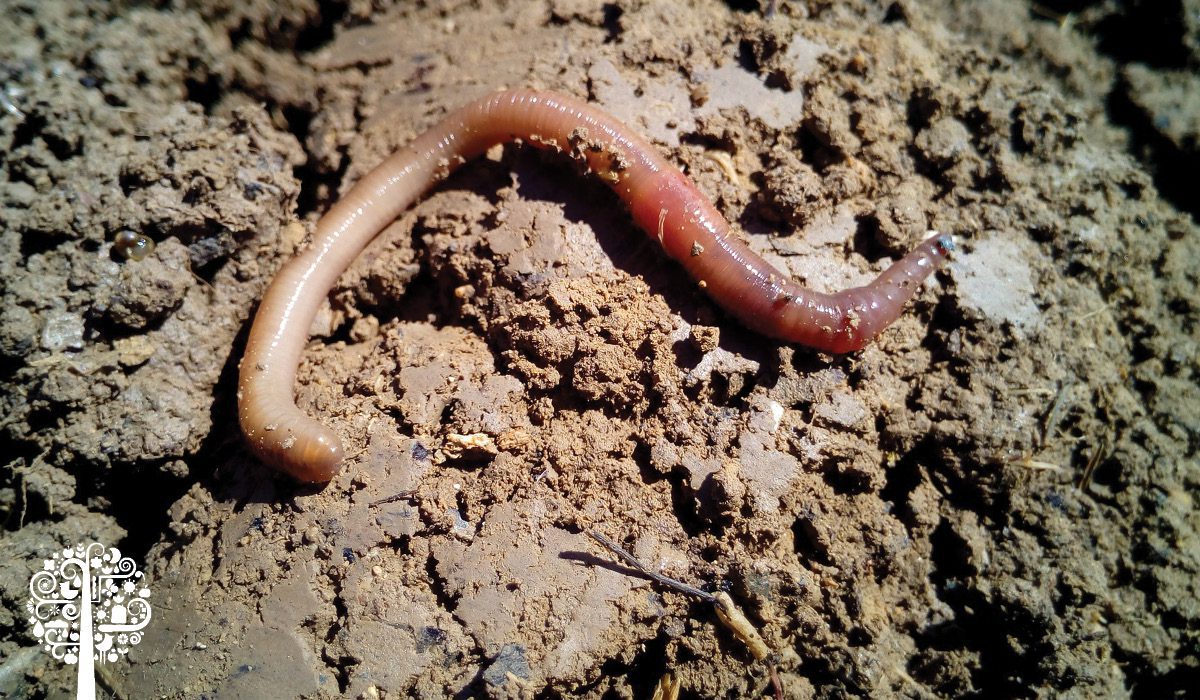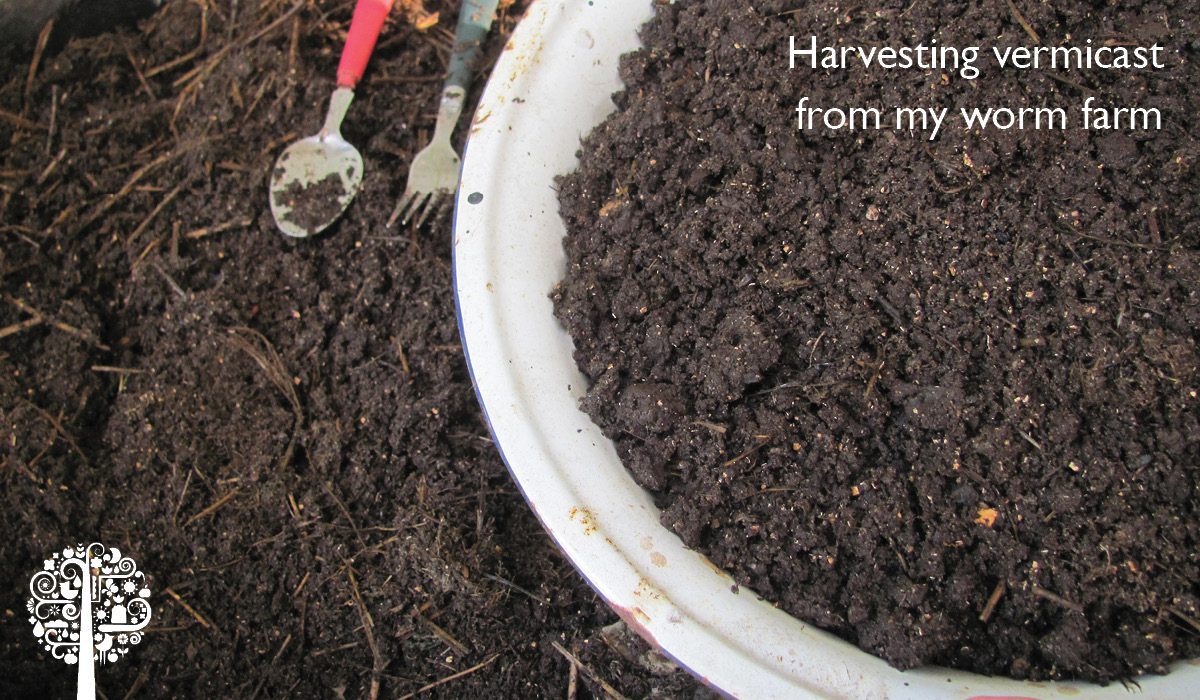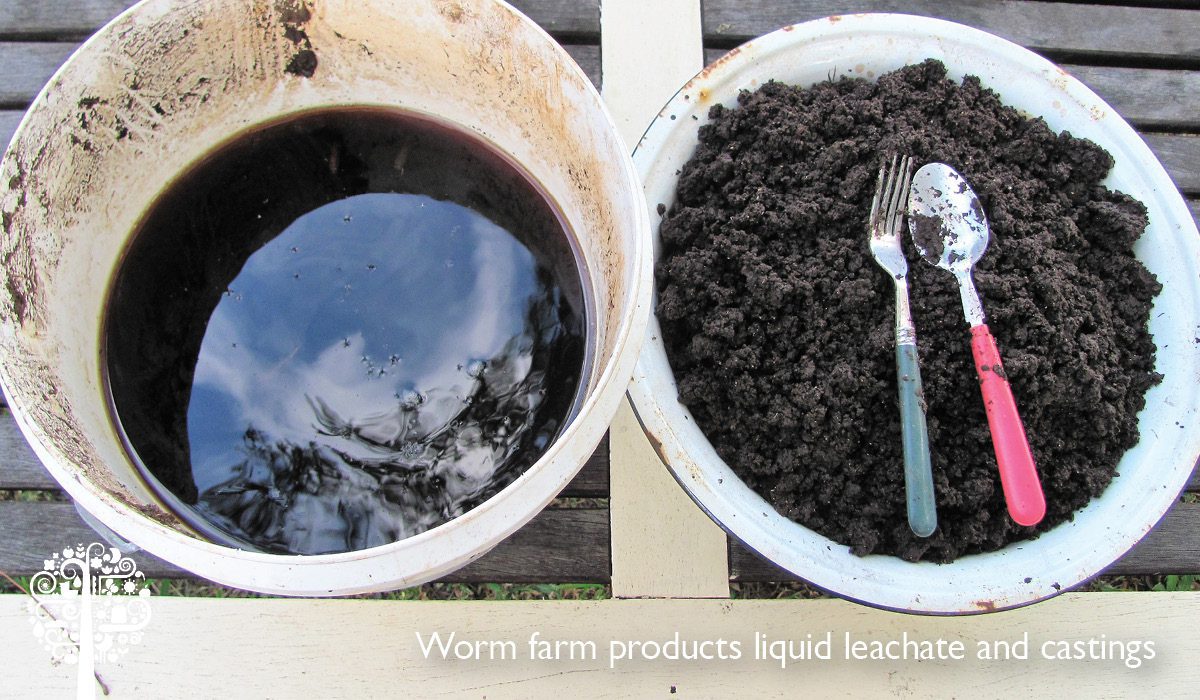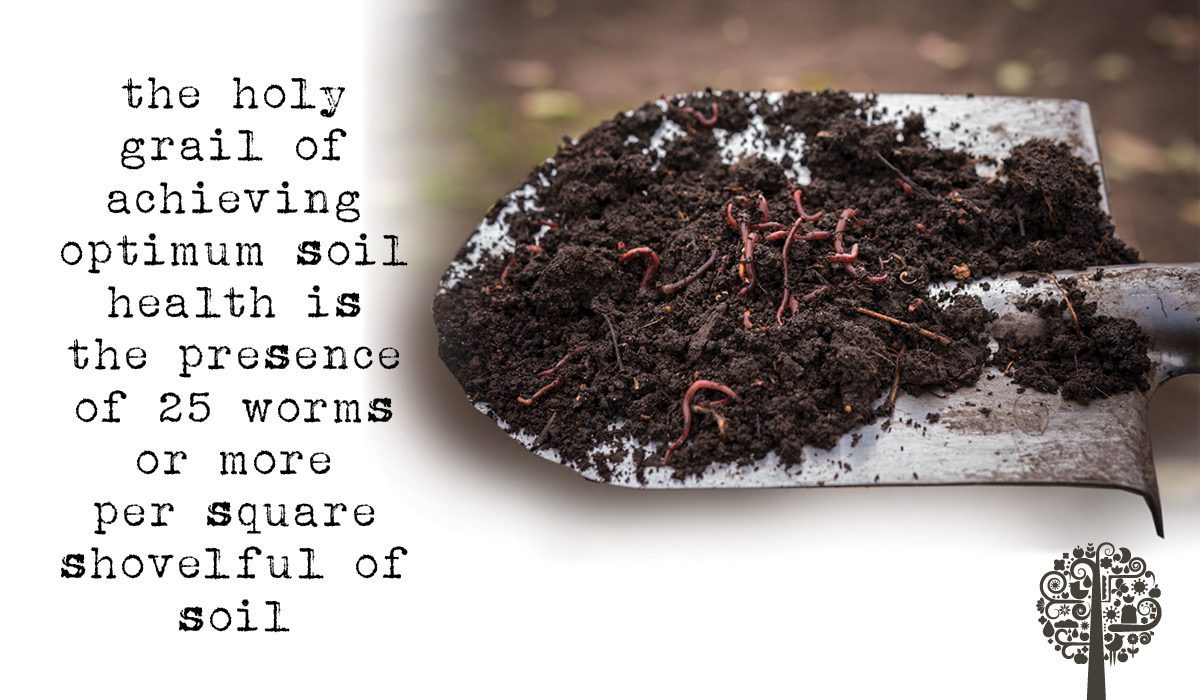Fight Pests, Diseases, and Improve Soil Health with Vermicast
Over a decade ago, I studied sustainable agriculture practices and discovered a vital puzzle piece for building healthy soils. I learned what every gardener and farmer should aim for – the holy grail of achieving optimum soil health is the presence of 25 worms or more per square shovelful of soil. This equates to 30kg of earthworm castings per square meter each year. That’s a massive quantity of free fertilizer!

Since that eye-opening discovery, I’ve nurtured worms and my invisible soil workforce to grow a healthy, sustainable garden teeming with bio-life. Both composting and earthworm species have an unrivaled ability to turn green ‘waste’ into valuable products, sequester carbon in their humus-rich castings, significantly improve soil quality, plant health, and yields. As far back as 1881, Charles Darwin recognized their value: “Of all animals, few have contributed so much to the development of the world, as we know it, as earthworms.”
Vermicast vs Vermicompost
- ‘Vermicomposting’ is the process of worms converting biodegradable organic matter and inorganic soil materials into ‘vermicast,’ worm manure or worm castings.
- ‘Vermicompost’ is the term for live worm castings containing worm eggs and a percentage of undigested worm food.
- ‘Vermicast’ is pure worm excreta, so all food has been consumed and converted into nutrient-rich humus.

Aristotle insightfully once said, “Earthworms are the intestines of the soil.” He must have known a thing or two because worms indeed convert unavailable minerals into bioavailable nutrient minerals as the organic matter and soil particles travel through their intestines. The result is a flood of fertility immediately available to plants. I’ve seen the difference this can make. The container gardens and beds where I have worm farms have the healthiest, pest-resistant, and most productive plants in my garden.
Fertilizer Factories
Worms have a gizzard where they grind food to a fine consistency with the aid of enzymes and microbes in their gut, producing fine mucus-coated granular aggregates or castings. Earthworms are small, weighing on average 0.5g – 0.6g. They can eat the equivalent of their body weight and turn around 40-60% of their organic material diet into worm manure every day. Castings contain millions of soil microorganisms from the worm’s gut and help to inoculate these unique species in your soil. The worm castings have a neutral pH with a moisture content between 32% and 66%. If you want to speed up humus levels in your soil, earthworms decompose and produce humus four times faster than conventional composting methods. This is one of the reasons I employ multiple worm farms in my garden rather than compost bins. No heavy lifting!
Advantages of Vermicast
Nutrient availability
In his book, Harnessing the Earthworm, Dr. Thomas J. Barrett defines earthworm manure as “humus, a crumbly, finely-conditioned topsoil, richly endowed with all the elements of plant nutrition in water-soluble form” and the key to building fertility with structurally stable soil aggregates. Nutrients that would otherwise be locked up and remain unavailable are released, so they are accessible to plants via the castings. The humic acid component of worm castings provides binding sites for elements such as potassium, calcium, phosphorus, iron, and sulfur so they can be released on demand when required by plants (Holcombe and Longfellow, 1995).

Humic acid stimulates root growth, aids plant resilience to stress and assists with the uptake of fertilizers in the soil. As vermicast is water-soluble, plants can quickly and easily absorb essential macronutrients and trace elements without any risk of burning delicate plants. David Murphy, author of Organic Gardening with Worms, explains that “trace elements are attracted to vermicast and readily bond to it in the same way that opposite poles of a magnet attract each other. Plants have a stronger pull than the vermicast and can therefore draw the trace elements away from the vermicast and into their roots.”
Worm castings function as time-release nutrient capsules. Analyses found they contain seven times more phosphorus, ten times more potassium, five times more nitrogen, three times more exchangeable magnesium and 1.5 times more calcium than surrounding soil (de Vleeschauwer and Lal, 1981; Brady and Weil, 1999; Delahaut and Koval, 2002). They are also rich in iron and sulfur.

Importantly, worm castings act as a pH buffer for plants growing in acidic or alkaline soils where nutrients would otherwise be locked up, making these elements more accessible and minimizing potential nutrient deficiencies.
Free fertilizers
Worms produce two perfectly balanced fertilizers that condition the soil and feed plants: Vermicast, the solid fertilizer and nature’s soil builder; and. Vermi-leachate or aqueous vermicompost extract is the liquid also known as “worm tea.”
Dr. Norman Aroncon, PhD, University of Hawaii-Hilo, describes worm castings as “stabilized organic matter that is produced by the interaction of worms and microorganisms under controlled conditions.” Earthworms truck minerals through an underground highway of tunnels deep in the soil and deliver them to the root zone, where plants pick up this load and absorb the soluble nutrients for healthy growth. These burrow roadways are lined with mucus that stimulates soil biota. This network of channels creates an underground reservoir of nutrients and moisture. Earthworms also deposit calcium carbonate via their castings, effectively liming the soil. They fertilize in the root zone so plants can self-serve nutrients as needed. Studies, including Arancon, (2004), found that maximum benefit from vermicompost is obtained when it constitutes between 10 and 40% of the growing medium. Higher levels have no further advantage and may decrease plant growth or yields. You can have too much of a good thing!

Research studies confirm the application of diluted worm tea can both enhance plant growth and aid disease suppression. A May 2006 study, ‘Effects of vermicompost teas on plant growth and disease’ found teas produced by standing one liter of vermicompost in four liters of oxygenated water for 24 hours are “much more stable and effective” than non-aerated teas. Aerated vermicompost tea (ACT) dilutions (0.5% – 10%) significantly increased tomato plant germination and growth compared with controls. All ACT dilutions (4-40%) applied to tomato plants infected with Verticillium wilt resulted in significant disease suppression.
Make worm tea by adding vermicompost to water in a ratio of solids to water ranging from 1:3 to 1:200. Apply the tea as a liquid fertilizer to the soil, compost activator, or foliar spray.
Healthier plants and higher yields
Extensive testing performed by Ohio State, Cornell University, UC Davis found solid worm castings contribute to improved flower size, bloom quality, biomass quantity of flowers, and color. Test results on fruits and vegetables resulted in 57%-200% improved yields and enhanced taste and appearance. Various studies confirm vermicast plays a beneficial role in stimulating seed germination, shoot and root development, and vegetative growth. Seedlings have increased leaf area and root branching, so definitely worth using when seed raising.
Beneficial microbes
Vermicast inoculates the soil with beneficial bacteria that act as a gateway between the soil and plant roots. Compared to parent soil, worm castings contain up to 1,000 times more beneficial bacteria after passing through the worm’s gut. Earthworms use microorganisms in their digestive system in conjunction with enzymes to process food before excreting it as a microbially-rich fertilizer. In this way, worms turn dead dirt into living soil. Pathogenic bacteria die in the worm’s gut, helping protect plants from pathogens. So, the more worms in your soil, the greater the beneficial microbe populations that have a symbiotic relationship feeding and protecting your plants.
Plant growth hormones
Microbial flora in worm castings plays a critical role in releasing plant growth regulators like gibberellins, cytokinins and auxins (Tomati et al., 1983). Studies have shown seedlings grown with vermicast in the potting media exhibited faster growth and higher nitrogen availability. What’s particularly interesting for all growers is that many research studies have found vermicast stimulates ongoing plant growth even when the plants are already getting optimal nutrition.
Plant protection from pests and diseases
When liquid vermicast leachate is applied as a foliar spray, it provides natural resistance to certain plant diseases without the need for chemical alternatives. Vermicast was applied to various fruits and vegetables and fruits being attacked by common diseases in field trials. Researchers found the disease-causing microorganisms were significantly suppressed by the large populations of beneficial microbes in the vermicast that function as biocontrol agents through their competitive and antagonistic activities. They helped protect the plants and repel fungal infection by outcompeting the pathogens for available resources and blocked their access to plant roots by occupying all the general sites.

Castings also boost pest-resistant enzyme production in plants, increasing resistance to insect attack and help fight soil-borne plant diseases like root rot. A 2004 study (Edwards and Arancon) trialing the addition of 20% and 40% vermicompost to growing media for a variety of vegetables reported statistically significant reductions in arthropod (aphid, mealybug, spider mite) numbers and subsequent decreases in plant damage compared to the control. In field trials, researchers also observed statistically significant suppression of plant-parasitic nematodes and drastic reduction of spider mites and aphids with the application of worm tea. These results are especially encouraging for home gardeners.
Soil stability and structure
Worm castings improve soil crumb structure, boost oxygen availability and reduce compaction and erosion. Worms aerate the soil through their burrowing and tunneling activities, creating pathways for oxygen to enter and air pockets for plant roots to access. They provide an oxygenated environment for microorganism populations to live while insulating plant roots from temperature extremes. Vermicast stabilizes soil moisture levels, helping minimize plant stress from drought by increasing water infiltration and water-holding capacity. Castings retain two to three times more water than their weight in soil. Wormpopulated soil can hold over six times more water than similar soil without worms, without getting waterlogged. A money-saving benefit, particularly in dry climates.

Whether you use above-ground worm farms or in-ground systems, encouraging earthworms as productive plowers and harnessing their products is likely one of the most valuable and economical ways to create healthy soil and plants.
Sources:
-
Agricultural Sciences Vol.3 No.7, 2012, Article ID:24396. Vermicompost, the story of organic gold: A review
-
Journal of Applied Horticulture, 16(2): 112-116, 2014. Effect of storage on some physical and chemical characteristics of vermicast.
-
Journal of Natural Sciences, Engineering and Technology. 13. 36-43, 2015. Nutrient Analysis of Three Earthworm CastTypes collected from Ikenne, Ogun State • Davley Organics. Vermicast explained, beyond a simple element analysis
-
hilo.hawaii.edu/faculty/arancon/




